Mount Kailash is the most sacred mountain in the world. The mystery of Mount Kailash is often connected to religion and mythology. It lies in Tibet and the landscape around it is a beautiful paradise. It is referred to as a link between heaven and earth, that is a link between our world and the place where Gods or enlightened beings reside.
Kailash is a 6638-meter high mountain in Tibet. The name Kailasa has its origin in Sanskrit, and it means crystal. The Tibetans call it the Gang Rinpoche or Precious Snow Mountain. In Buddhist culture, it is associated with Mount Meru. Hindu mythology says that Kailasa is the abode of Lord Shiva.
As per Bon mythology, the mountain is called Tise, and it is believed that Goddess Sipaimen lives here. Bonpos refer to it as the Waters Flower or Mountain of Sea Water. The Kailash mountain is the birthplace of the worlds four greatest religions – Hinduism, Buddhism, Jainism and Bon. And this makes it the most sacred mountain in the world.
Before I start, I would like to say that I am a Hindu respecting all other religions. I have included some of the Hindu mythology associated with Mount Kailash. This is for better cultural understanding of the destination. And also because the stories are very interesting. I have tried to make it unbiased, and also included stories from other religions.
Location and geography of Mount Kailash
Kailash mountain’s speciality is not its height, but it is the distinct shape and location. The mountain looks like a pyramid from one side and like a cone from another. Its four sides are faced towards the four directions respectively. It is located in the Gangdise mountain range, but none of the surrounding mountains obscure or hide it from the view. Kailash is also the place where four rivers – Indus, Brahmaputra, Surlej and Karnali originate.
What’s more astonishing is the fact that Mount Kailash is the centre of the World. It is referred to as Axis Mundi by Americans and Russians. According to Indian Vedic knowledge, it is the Cosmic Axis of the World. The geographic location of the mountain adds up to this mystery. Mount Kailash is 13,333 km away from South pole and 6,666 km away from the North Pole. Some believe it is connected to other ancient monuments like the Stonehenge in the UK and the pyramids of Egypt.
Lake Manasarovar
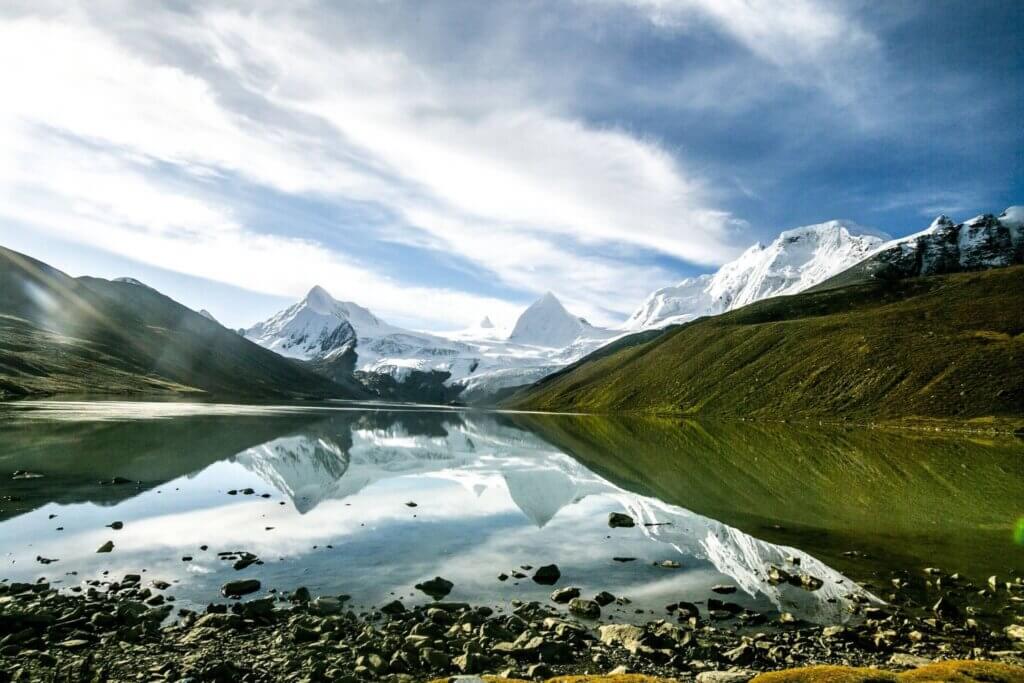
At the foot of Mount Kailash are two beautiful lakes Manasarovar and Rakshastal.
Manasarovar is a round lake which represents the Sun, Gods and positive energy. This is the lake of life. It is the highest freshwater lake in the world. It is of great importance in most of the religions. Drinking its holy water brings good health and after bathing here all your sins get washed away according to the Hindus. The scenery around this Lake is so beautiful that anyone who has visited Manasarovar will say God lives here. The Hindu pilgrim perform Puja on the banks of this lake.
The waters of Manasarovar are calm even during the most thunderous storms. But at the time of Brahmamuhurta, that is 1.5 hours before dawn- roughly 3 to 5 am (local time), the lake wakes up. Winds blow around, birds start chirping and waves start forming in the lake. What follows is an extremely astonishing sight. The lake glows up with multicoloured bright lights. It looks as if the Gods come out from within the lake at this hour. You should stay at a monastery near Manasarovar to witness this unexplained phenomenon. You can also go around the lake in the clockwise direction. Doing this is called Manasarovar Kora, Manasarovar Parikrama or Kailash Mansarovar Yatra. Trekking around the lake is easier than Mount Kailash Kora, and it takes 4 days.
Lake Rakshastal
Rakshastal is a lake right next to Manasarovar. Both the lakes are separated by a tiny strip of the mountain. It represents the night, negative energy and demons. This is the lake of death and it perfectly mirrors the Mount Kailash. The Rakshastal is a saltwater lake. Moreover, it does not support any form of life. No plants, insects, birds or fish are found in and around Rakshastal. Hindus are not supposed to bath here. It is also said that one should not even look at Rakshastal while circumambulating Kailash Mountain. The Buddhists also don’t have any monasteries around this lake. And it is full of waves often, even when the weather is calm.
The Manasarovar and Rakshastal are like Yin Yang in nature. They represent that both good and bad, positivity and negativity exists in us and the world at the same time. The area around Manasarovar, Rakshastal and Kailash Mountain is one of the most mysterious regions in the world.
Kailash Circumambulation or Kailash Parikrama
Circumambulating Mount Kailash is the most rigorous pilgrimage. The altitude and the uneven terrain challenges every person physically and mentally. Yet several pilgrims do it every year. The tradition of circumambulating the mountain goes back thousands of years ago. The Hindus call it as Kailash Parikrama. And the Tibetian locals call it Kailash Kora. This circumambulation is done in the clockwise direction by the Hindus and Buddhists, and in the counterclockwise direction by the Jains and Bönpos. Whichever way you choose, the landscapes and scenery will not disappoint you. You should do the Kailash yatra or circumambulation even if you don’t follow any of the above religions. As a tourist, you will do a clockwise Kora as per the Tibetian traditions. Below are more details on this 3-day trek around Kailash.
Day 1- Darchen to Derapuk
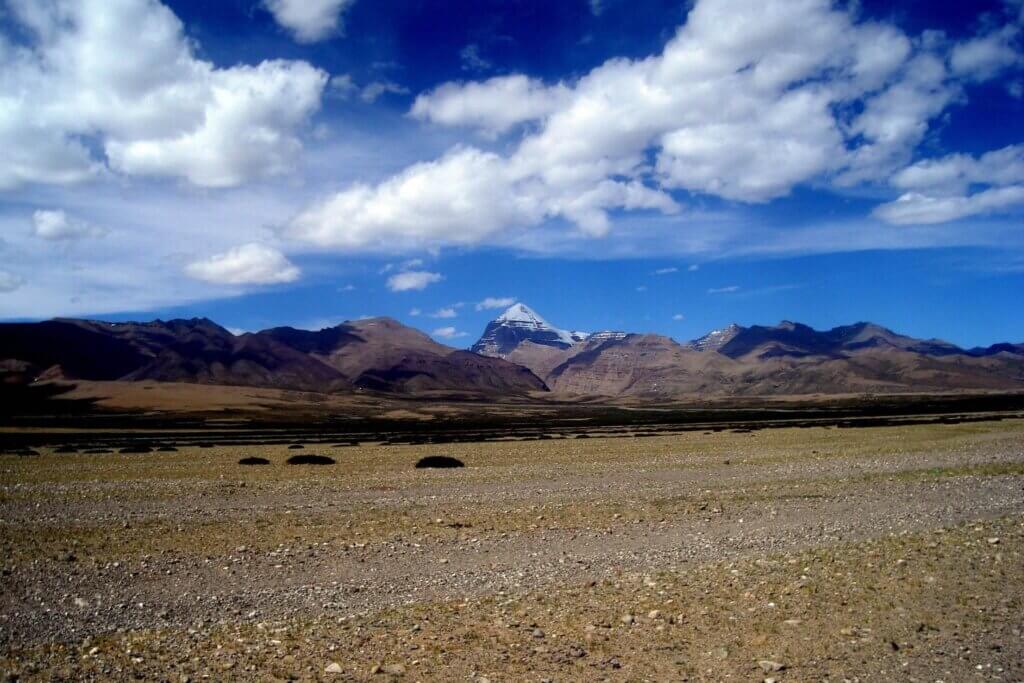
The Kailash circumambulation starts from Darchen (4575 meters). Alternatively, you can drive up to Tarboche (4520 meters) and begin your trek from there. Most of the first day will be walking along the river bed. Your day starts at the south face of Mount Kailash and ends at the North face. Once you cross the Yam Dwar at Tarboche, you will be facing the harsh elements of nature. Yam Dwar means “Gateway of the God of Death.” You can take a wild horse, pony or Yak to make the journey easier. You need to book them in advance with your Tibetian guide.
Some amenities along the trail include benches for resting and tea houses. You can get water, tea or some Tibetian snacks like noodles at such tea houses. You will have to stay the night at a monastery at Dirapuk or Derapuk (5080 meters). The Golden Kailash at the time of sunset is visible from Dirapuk. You can stay here for an extra day and go to Kailash Charan Sparsh (5335 meters) from Dirapuk, then come back in a day. The Kailash Charan Sparsh is a part of Kailash inner Kora. This temple at the north face of Mount Kailash is the main reason why pilgrims and devotees visit Kailash. It is like taking blessings of the almighty from the foot of the mountain. The mountain is the closest and the view is clearest at this place.
Key points
- Duration: 6-7 hours, excluding resting time.
- Distance: 20 km
- Terrain: 200 meters ascent, rest flat.
- Dirapuk to Charan Sparsh: Ascent while going and descent while coming back.
- Places covered: Darchen, Yam Dwar or Tarboche, Mani Stones, Dirapuk Monastery, Kailash Charan Sparsh.
Day 2- Derapuk to Juthulpuk
The second day is the most challenging part of the journey. The altitude rises higher and the air gets thinner. You have to trek up and down some tricky mountain passages. You will see the north face of the mountain most of the time.
After covering 3 km from Derapuk, you arrive at Siwasthal or Sky burial point (5608 meters). Hindus believe this is the land of Yama or the God of Death. And indeed the toughest part of the trek starts here. It is also believed that when a person walks through this point he dies. And once he reaches Dolma La pass a person is reborn. The Dolma La pass or Zhuomala Pass is 5630 meters above sea level. This is the highest and trickiest point in Kailash circumambulation. Although it is very beautiful don’t stay long at this point.
After this point, there is a serious descending route. And you have to come down by yourself. The horses or yaks you hired, are not safe at this point. As you descend you will come across the Gauri Kund or Touji Lake. The Gauri Kund is very attractive, with the backdrop of Mount Kailash. And it is a sacred place for Hindus. This is the place where Parvati, Lord Shiva’s wife created Lord Ganesha. This lake stands for love and compassion, and you will feel those vibes once you are here. After the serious ascent and descent, the hard part of the day is over. Now, you just have to cross the flatlands to reach Juthulpuk or Zuthulphuk or Dzultripuk Monastery (5480 meters). You can see the beautiful eastern face of the mountain from here.
Key points
- Duration: 7-8 hours, excluding resting time.
- Distance: 18 km
- Terrain: 550 meters ascent, 600 meters descent, rest flat.
- Places covered: Sky burial point or Siwasthal, Dolma La Pass or Zhuomala Pass, Gauri Kund or Touji Lake, other small lakes, teahouse, Juthulpuk or Zuthulphuk or Dzultripuk monastery.
Day 3- Juthulpuk to Darchen
The third day is very easy, as the hardest parts are already over. Most of it is walking through flatlands in Juthulpuk valley towards the driving station. On the way, you will see small houses of the local people. And yaks and sheep grazing in the beautiful fields. The scenery is magnificent and nature is forgiving. There is a pickup point near the Zongdui tea house. From here you can drive 4 km to Darchen, and then back to Manasarover.
Key points
- Duration: 3-4 hours, excluding resting time.
- Distance: 14 km
- Terrain: 150 meters descent, rest flat.
If you are physically fit and have previous trekking and altitude experience then you can do this trek on foot. Otherwise, just hire a horse or a yak and make your life easier. You have to take care, as nature here is harsh and some people even die due to altitude sickness. Seniors and oldies should carry an oxygen tank, for just in case situations.
After you complete the Kailash Kora or Kailash parikrama, you will change as a person. Apart from religious reasons, I believe mountains teach us a lot of things. And these 3 days in this raw nature and most primitive conditions will be full of lessons for you. It will change the way you look at your life.
Kailash Inner Kora Trek
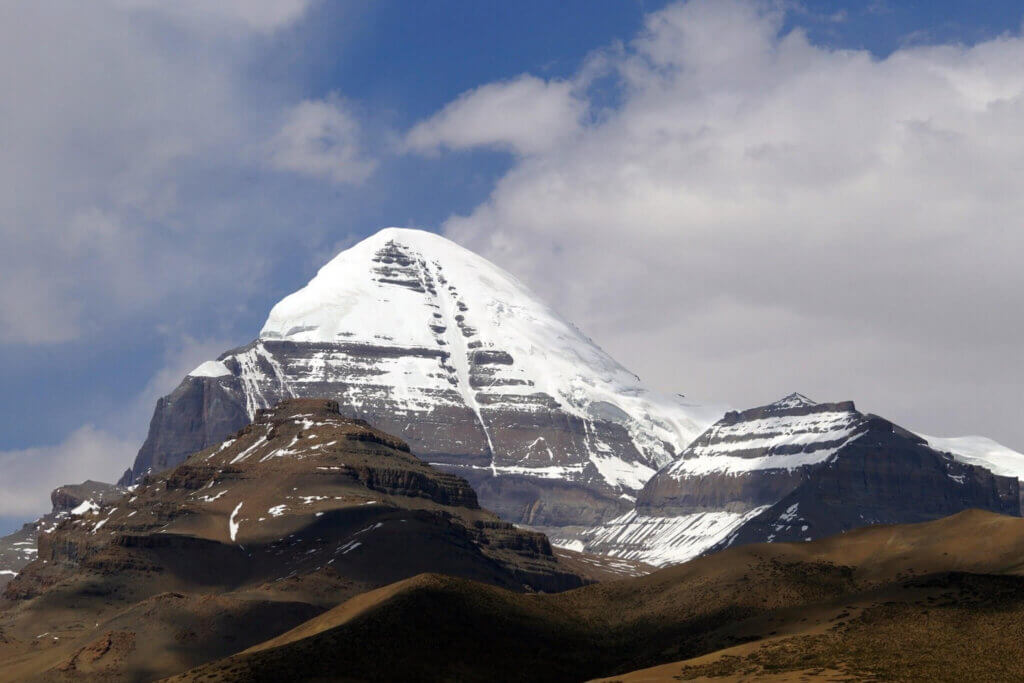
Kailash Inner Kora is a challenging 34 km long journey through the mountains which have no human settlements, except 2 monasteries. For this trek, you need serious mountaineering experience and proper equipment too. The trekking route is filled with snow, ice, crevices and rocks. To make this trek easier, you can hire a horse and a personal helper, to accompany during the trek. The Kailash Inner Parikrama takes you closer to the inside of Mount Kailash – Lord Shiva’s home. This is a trek around the Nandi Parvat or Yinjietuo Mountain, Saptarishi Caves and Ashthapad near Serlung Gompa.
Nandi Parvat or Yinjietuo Mountain
Just like every Shiva temple, there is a Nandi shaped mountain facing Mount Kailash. Nandi is like a loyal devotee of Lord Shiva, who is also the vehicle of Shiva, in Hindu mythology. It is a sacred bull, who sits outside every temple of Lord Shiva, who is also like a gatekeeper. Mount Yinjietuo or Nandi Parvat is such a bull shaped mountain on the southern side of Mount Kailash. Almost in every temple of Shiva around India, the Nandi is to the south and the Shiv Linga to the north. Similar geography exists here at Kailash. Without worshipping the Nandi Parvat, a trip to Kailash is incomplete.
Other Places near Mount Kailash
- Ashtapad: Ashtapad is the most sacred place in Jainism. Ashtapad means eight steps. But it represents 8 giant steps required to climb Mount Kailash or the eight steps that lead to a palace. It is also said to represent eight mountains. The exact location of the eight steps is not yet found, it is still being researched. But the scenery around Ashtapad is very beautiful in the entire Kailash region. Ashtapad is the place where the first Jain Thirthankar – Rishabdeva or Bhagwan Adinath attained Nirvana. This is why it is the most visited place by Jains.
- Atmalingam: This is a Shiva Linga at the foot of Mount Kailash. It is said to be formed from snow called Puspadanta. A river flows from here which is the purest of all. It is interesting to walk the path of Ashtapad and reach here.
- Saptarishi Caves: Just near the Atma Linga, are the Saptarishi caves. Saptarishi caves mean the caves of 7 sages. A long time ago, 7 rishis or sages stayed here and learnt the wisdom of Lord Shiva from himself. It is believed that numerous sages still live hidden in some caves here.
Hindu mythology and Vedic descriptions of Mount Kailash
In Hindu mythology, Vedic scriptures and Puranas, Kailash Parvat is referred to as a link between heaven and the earth. This is the place where Lord Shiva, who is the destroyer of ignorance and illusion resides. Interestingly, the descriptions in Vedas perfectly match the size and structure of the actual mountain. The four faces of Mount Kailash depict four emotions. The sharp face of the north depicts a forbidding emotion. The south face is always covered in snow and represents splendour. The west face represents compassion and the east face shows mystery. It is also said, the north is made of gold, the south of lapis lazuli, the west is made of ruby and the east is crystal. The Aruna mountain on the western side of Mount Kailash is said to have many herbal medicines.
The Kailash mountain is like a library of mysteries and answers, just like the holy grail in Christianity. There are many interesting experiences which attract devotees and pilgrims to the mountain. The mountain emits strong positive energy in all the four directions. Kailash Mountain is also called as the Om Parvat. The snow falling on the mountain creates the Om (ॐ) symbol, which is the sacred symbol in Hinduism. And at the time of sunset, the shadows cast by the mountain on the east side form a Swastik (卐). A Swastik in Hinduism represents well being and prosperity.
The mystery of Mount Kailash
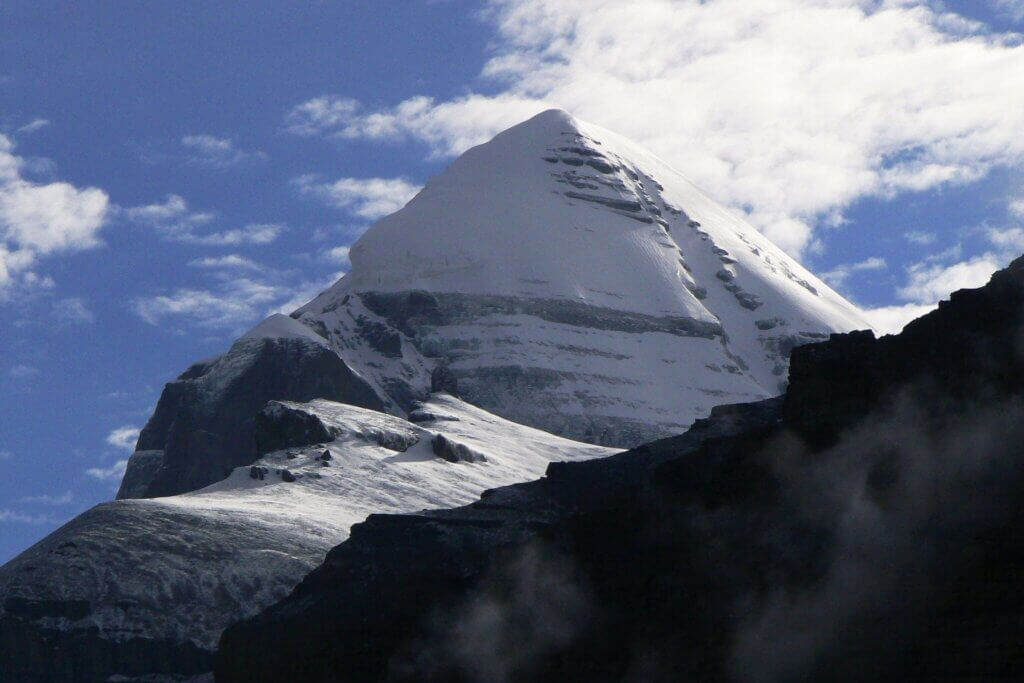
There are numerous mysteries associated with Kailash Parvat or Kailash Mountain. Nobody has climbed the Kailash Parvat, except one Buddhist monk called Milarepa. It is indeed astonishing that several people have already scaled the world’s highest mountain – Mount Everest. But not even a handful succeeded in scaling Kailash mountain, even in the 21st century. All religions suggest that no mortal is allowed to reach the top of Kailash, as this is the place where Gods live. People believe that stairways on Kailash mountain lead to heaven. Also, any attempt to climb Mount Kailash is now banned due to safety reasons and religious opinions.
Some trekkers who had tried to climb up the mountain claim that it moves. They suddenly found themselves on the other side of the mountain, losing direction or facing extreme weather conditions. Another issue faced by people visiting Kailash Parvat is rapid ageing. Many pilgrims and people who visit Kailash mountain have found that their hair and nails grow rapidly. A person ages 2 weeks in 12 hours, which means a month in a day, when he is around Mount Kailash. Around Kailash, you will feel some unexplained energy. Many believe that God truly lives here, in this piece of paradise.
Mount Kailash is manmade?
The Russians believe that Mount Kailash is manmade. In 1999, a Russian geologist named Muldashev along with his team concluded that Mount Kailash is a manmade pyramid. Muldashev believed that Kailash and all other mountains around are pyramids. And according to him, Kailash is the centre of all paranormal activities. The mountain’s sides are extremely steep and perpendicular, which leads this theory that it is not a natural mountain. Kailash is a manmade pyramid from ancient times. They also believe that Mount Kailash is hollow form the centre.
Other Mysteries of Mount Kailash
- Carvings and Sculptures: With modern satellite imagery, it was found that there are carvings on the Kailash Mountain. And these are not any ordinary carvings. They are almost 250 feet high sculptures. Just imagine how a human being would look like a speck in front of these sculptures. When nobody has been able to go atop Mount Kailash, the question arises – Who made these carvings?
- UFO sightings: Some people claim to have seen blobs of light in the night sky, particularly above Manasarover. There are videos on youtube where mysterious lights keep moving or changing their positions. The locals confirm seeing UFOs in the sky which disappear near Mount Kailash. The Government, however, brushes off these claims.
- Rapid Aging: Some Siberian trekkers, who went beyond a certain point on Mount Kailash, experienced rapid ageing. They were suddenly aged some decades older. When they came back from the mountain they all died of old age.
- Lights and Noises at Manasarover: The lake Manasarovar lights up with unexplained lights at dawn. People have seen moving blobs of light in the sky above Lake Manasarover. Many people believe that Gods or enlightened beings bath here at dawn.
How to reach Mount Kailash
- From Lhasa in Tibet: Most foreigners will follow this route, and this is the best route to approach Mount Kailash. You will get to see the beautiful sights of Tibet on the way. Moreover, you get some extra time to get acclimatized to the higher altitudes. The route is like this: Lhasa – Shigatse – Lhatse – Everest Base Camp – Saga – Paryang – Lake Manasarovar – Darchen.
- From India: Delhi – Lucknow – Nepalgunj in Nepal – Simikot in Nepal – Hilsa in Nepal – Taklakot in Tibet – Lake Manasarovar – Darchen. For Indians
- From Nepal: Kathmandu in Nepal – Nepalgunj in Nepal – Simikot in Nepal – Hilsa in Nepal – Taklakot in Tibet – Lake Manasarovar – Darchen.
Whichever route you choose, make sure to stop for 2-3 days at places where you change altitudes. The entire Tibet is at high altitudes, which is why it is called the roof of the world. It is necessary to slowly change altitudes and take stops for acclimatization to the height. Even is you feel nothing initially, you may fall sick after reaching the highest altitude at Kailash Parikrama. So it is better to stop, explore the city, and enjoy the journey. Time, patience and money are essential to make it a smooth trip.
It is best to visit the above places as a part of an organized tour. The tour guide arranges for timely pickup and drop, food during the journey and proper stay facilities for the night, which makes your journey easier. Indian vegetarian food is available at selected places during the Kaislash Kora or Parikrama.
Permits and Visas for Mount Kailash
- Chinese Permit
- Chinese Visa for foreigners (including Indians)
- Only Group Visa for Tibetians
- Tibetian Permits (for foreigners including Indians)
- Tibet Entry Permit
- Aliens Travel Permit
- Foreign Affairs Permit
- Military Permit
It’s best to keep all the permits handy. You will be required to show them at various checkpoints. Your tour agency or trip guide will help you is getting the above-required permits.
FAQs
Kailash Parikrama is difficult because it is a high altitude trek. The 2nd day of the Kailash Parikrama or Kora is challenging, particularly at Dolma La Pass.
With modern satellite imagery, it was found that there are carvings on the Kailash Mountain. And these are not any ordinary carvings. They are almost 250 feet high sculptures. Just imagine how a human being would look like a speck in front of these sculptures. When nobody has been able to go atop Mount Kailash, the question arises – Who made these carvings?
Mount Kailash is in Tibet autonomous region which is controlled by China.
Any attempt to climb Mount Kailash is banned now due to safety and religious reasons.
Chinese Visa for foreigners (including Indians), Tibet Entry Permit, Aliens Travel Permit, Foreign Affairs Permit, Military Permit. But for Tibetians only a Group Visa is required.
Darchen – Deraphuk – Dolma La – Zhuthulphuk – Darchen
No, nobody has climbed to the top of Mount Kailash. Every attempt by mountaineers has been unsuccessful so far.
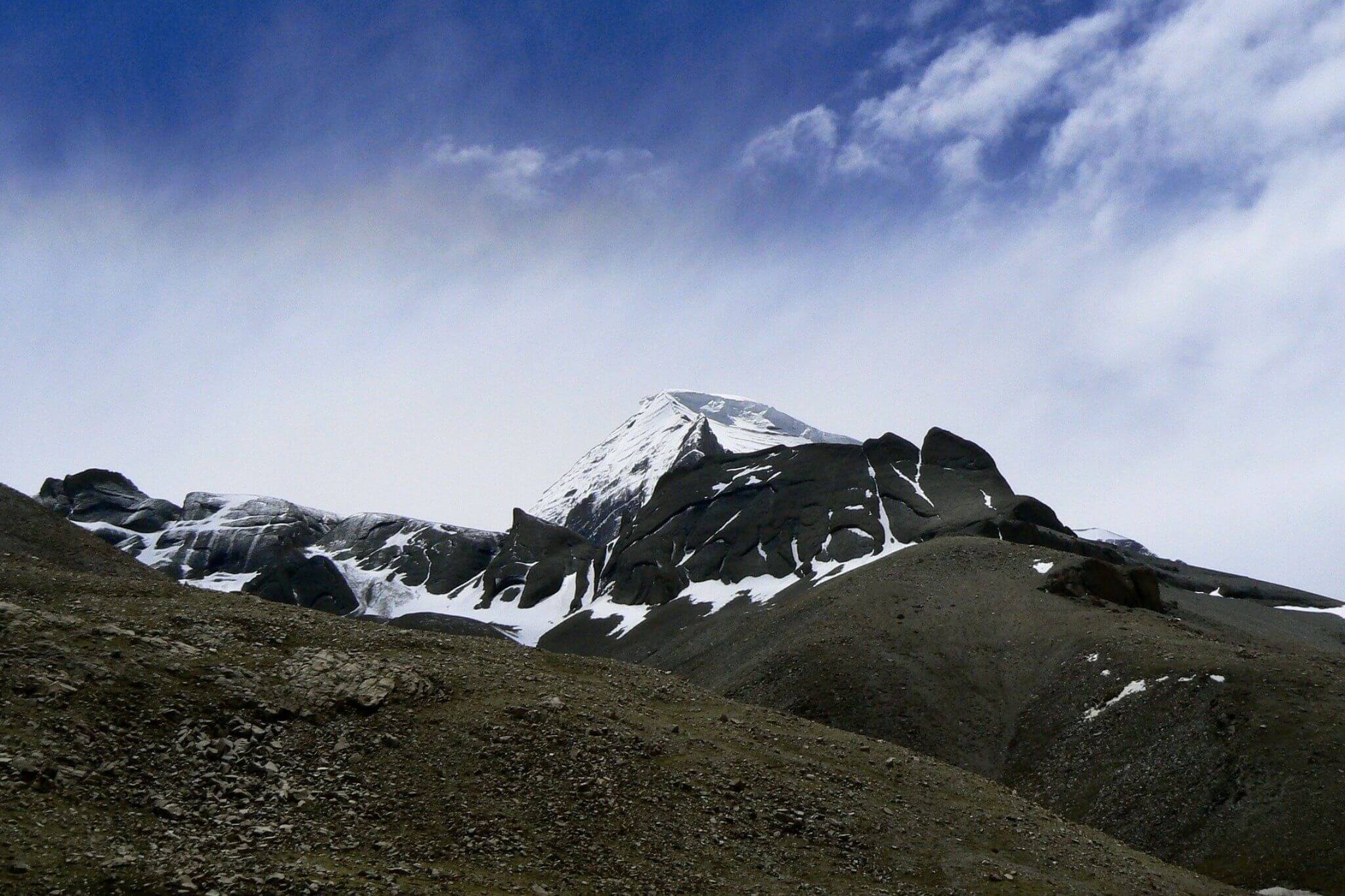
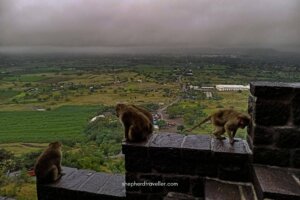
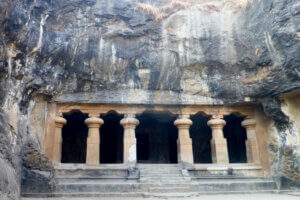
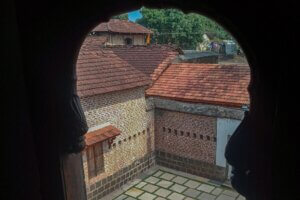
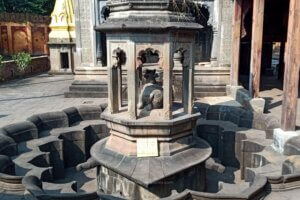
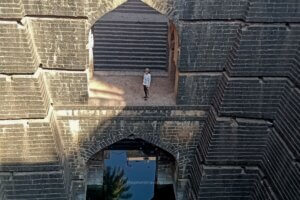
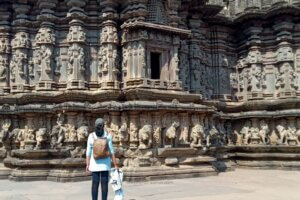
You have mentioned that Kailash is also known as Om Parvat. This is not true. Om parvat is another mountain in Uttarakhand, India.
https://en.wikipedia.org/wiki/Om_Parvat